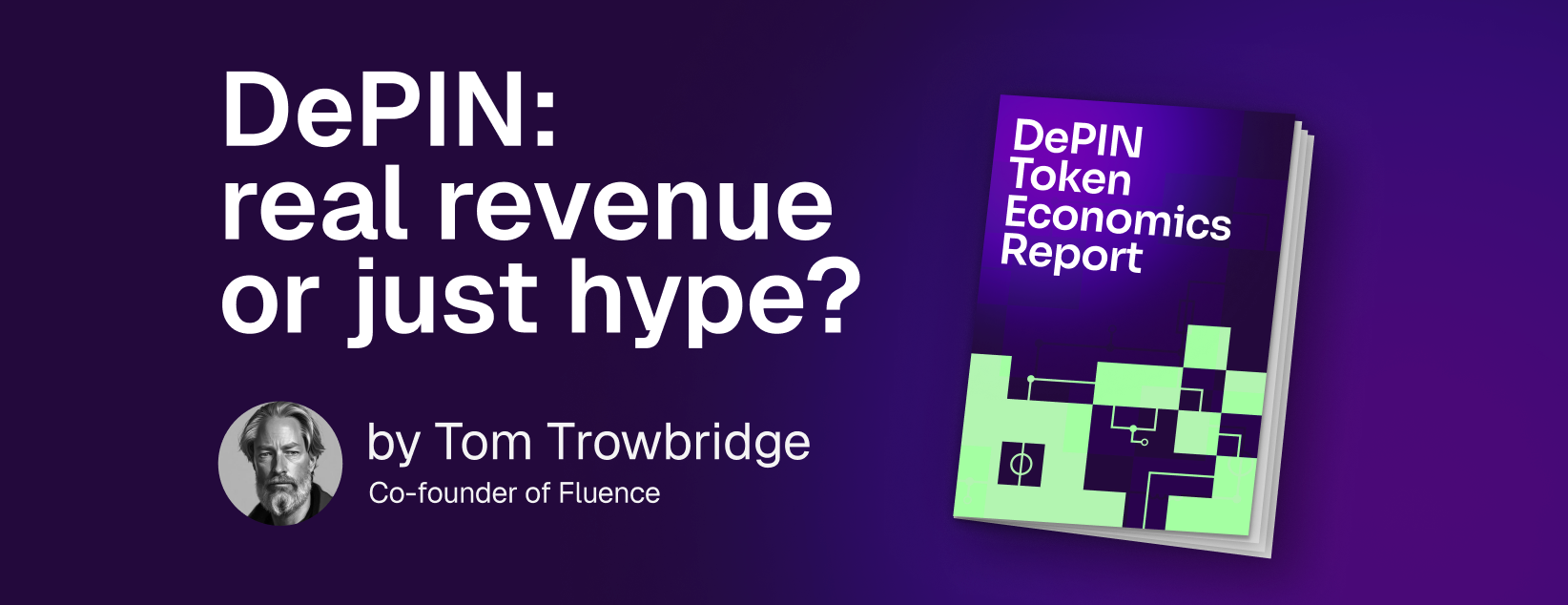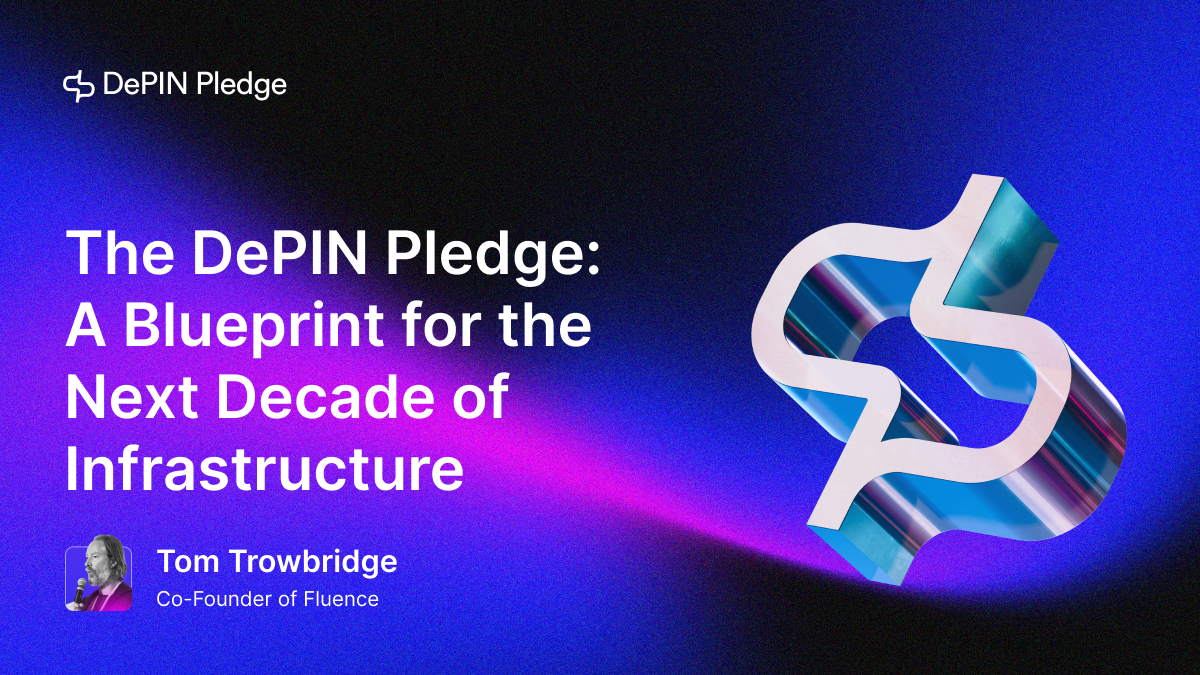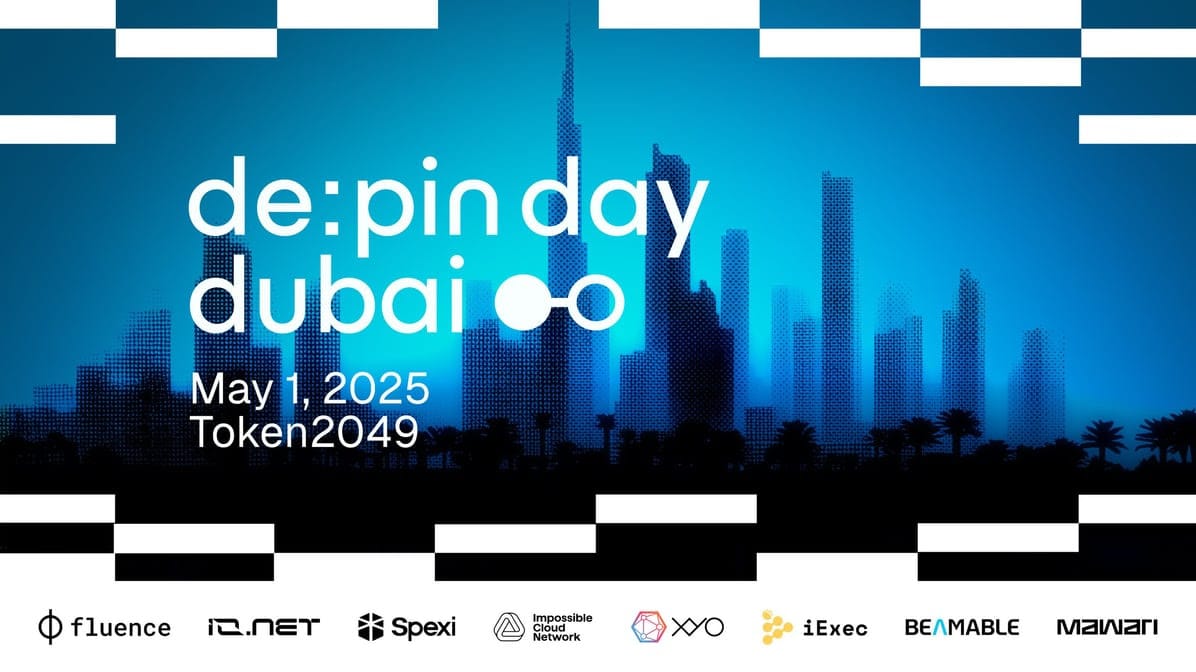Fluence Monthly Recap: March 2025

From a redesigned website that clearly communicates Fluence’s mission, to a foundational tokenomics report grounded in real DePIN data and expert insights, March was about sharpening the our message and strengthening the Cloudless network.
With expanded liquidity, clearer staking opportunities, and ongoing engagement through AMAs, podcasts, and media, Fluence is supporting the contributors building a censorship-resistant, cloudless infrastructure layer for Web3.
Let’s look at the key developments that made March 2025 a defining month for Fluence.
TLDR:
- Revamped and upgraded Fluence website
- Latest DePINed Podcast episodes
- New AMAs featuring our co-founders
- DePIN Token Economics Report by Tom Trowbridge
- High APR offering on Biconomy
- Added liquidity for FLT token
- Fluence featured in the media
- Why DePIN Pledge matters now
- Fluence’s next destination: Token2049, Dubai
A New Digital Front Door: The Fluence Website Redesign

A website isn’t just a homepage. It’s a first interaction, telling builders, researchers, and operators what a network represents. In March, Fluence launched a fully redesigned website that highlights technology and communicates direction.
The new Fluence VM section brings that vision closer to reality.
Cloudless virtual machines let you deploy globally in seconds, supported by enterprise-grade hardware in GDPR, ISO 27001, and SOC2 certified data centers. You gain the benefits of a sovereign cloud without the typical complications.
Want to know how much you’d save? The new pricing calculator shows exactly what you’d pay—and what you wouldn’t.
The updated Provider section introduces a more efficient way to earn from unused enterprise-grade hardware by connecting to a decentralized compute network.
Have hardware in a certified data center? You can earn protocol rewards in FLT regardless of rental status. When machines are rented, you receive immediate payouts in USDC.
A quick look at the built-in earning calculator:
Staking FLT supports the network by onboarding real compute capacity, expanding provider participation, and strengthening applications that need reliable performance. Whether you stake 50 or 5,000 FLT, you're helping secure the foundation of a new compute model.
The new Staking section brings clarity, transparency, and useful insight. At the center of this brand new page is an intuitive APR calculator that shows what your stake could earn:

The previous dev-centric Fluence website layout gave way to a clean UX, intuitive navigation, and a clear outline of Fluence’s role as a decentralized compute layer purpose-built for DePIN. Whether you're a protocol designer or an independent node operator, it’s easier to understand how to get started.
The redesign reflects more than visual updates. It reinforces Fluence's readiness for production and active ecosystem participation across the broader DePIN stack.
DePIN Tokenomics: A Blueprint for Sustainable Incentives
What happens when you gather insights from 110+ DePIN founders, host DePIN Day events across 10 countries, and record 47 DePINed Podcast episodes—all focused on one core question: how do token incentives actually work in DePIN?
You gain clarity.
After a year of focused research, Tom Trowbridge, our co-founder, has published the DePIN Token Economics Report that rethinks token economics at their foundation—a blueprint informed by real builders, real networks, and actual usage.

The report explains the mechanics behind the FLT token, covering:
- Why do some DePINs scale while others stall?
- How do token models support or hinder long-term sustainability?
- What role do geography, infrastructure, and community play?
- And many more.
The answers are complex and essential to understand.
This report marks the beginning of deeper inquiry, stronger models, and more effective collaboration. Whether you're building a new protocol or simply trying to understand what drives successful DePINs, you'll find deep insights informed by real-world DePIN applications here.
The DePINed Podcast: From GPS to GPT
March’s DePINed Podcast episode line-up was an exciting one, with three in-person specialist recorded in Denver during ETH Denver.
We explored four compelling ideas shaping the next phase of decentralized technologies — and each episode raised an essential question: what if the future isn’t centralized?
Episode 44 | AYDO
Alexander Markin (AYDO) discusses how decentralized data providers can earn value from the real-world data they generate for AI training.
Episode 45 | Geodnet
Mike Horton (GEODNET) explains how centimeter-level GPS accuracy is enabling new use cases in drones, agri-tech, and autonomous systems, all without depending on legacy satellites.
Episode 46 | Huddle01
Ayush Ranjan (Huddle01) introduces a decentralized real-time network for video conferencing that offers better speed, lower costs, and stronger security than traditional platforms.
Episode 47 | Gensyn
Gensyn AI’s founders emphasize compute availability—beyond just GPUs—as a core asset for AI. Their protocol opens a global market for machine learning operations, built on open-source technology and verifiability.
AMAs on the Most Talked About Topics in Web3
AI isn’t slowing down, and demand for compute continues to accelerate.
Two recent AMAs hosted by Fluence and Tookey on X Spaces drew strong engagement. Builders from Fluence, Impossible Cloud Network, NodeOps, and Mawari came together on March 13 to explore how DePIN is becoming a foundation for AI-powered compute.
The conversation brought forward more than technical possibilities. A shared vision emerged: decentralized systems are critical for building scalable, permissionless AI.
Real Rewards, Real Liquidity
In March, Fluence put capital allocation into motion through functional rewards:
- More liquidity for FLT was added to Uniswap, fulfilling Fluence DAO’s proposal to deepen the token’s liquidity.
- High APR rewards launched on Biconomy, supporting community participation and long-term alignment.
On Biconomy, FLT holders experienced increased annual percentage rewards for staking and liquidity provision. Uniswap saw expanded liquidity pools, reducing slippage and improving access for both developers and traders.
What stands out here is timing. Amid shifting market conditions, Fluence focused on strategies that encourage healthy capital participation. It showed that decentralized infrastructure includes distributed capital onboarding—not just compute resources.
Fluence in the Media
In a recent interview with BitcoinMagNL, our co-founder Tom Trowbridge discussed a vision for Web3 infrastructure: decentralized computing free from centralized cloud control.
Fluence isn't replacing Amazon or Google but is building a compute layer with no single control.
“Most of the compute you do when you use your phone to get an Uber, when you're on your Netflix account… all that is happening off-chain. That is the compute that we are trying to decentralize… without it, we are still subject to the centralized cloud.”
Imagine resilient infrastructure and workloads supported by top tier data centers at 60–80% less cost than traditional services. This is achieved by leveraging underused CPUs globally in a transparent network.
This concept is in practice through partnerships, node operators, and strategic initiatives like the DePIN Pledge, underscoring Fluence’s role in the decentralized tech stack. Decentralized payments and storage are covered. Compute is the next frontier. Fluence expands possibilities by sharing, not owning, infrastructure.
In a compelling fireside chat during DePIN Dinner in Denver with Rom Schmults of Blockchange Ventures, our co-founder Tom Trowbrige presented a strong thesis: decentralized infrastructure can scale reliably while maintaining core principles.
Fluence builds decentralized compute on CPUs because the internet relies on them. Despite claims of decentralization, many platforms still depend on centralized cloud providers.
"The kind of hidden secret is that our whole world of decentralization is actually powered by centralized companies and centralized data centers."
Fluence, however, partners with established data centers while keeping its architecture open and permissionless, supporting trustless infrastructure for enterprises. Tom also highlighted Fluence’s focus on durability through its tokenomics model, where stake-denominated-in-dollars ensures security, and supply matches demand.
DePIN Pledge: Why it Matters Now
Since the launch of DePIN Pledge, we have seen a heartening amount of interest from a rising number of Web3 projects to pledge and build towards a more decentralized future.

While decentralization is key to Web3’s promise, many blockchain projects still rely on centralized systems for cloud hosting and data indexing, leaving them vulnerable to outages and censorship.
"Even Web3, built on the principles of decentralization, relies on the centralized cloud for much of its infrastructure, and remains dependent on these legacy, centralized and very powerful companies. Change is long overdue."
The DePIN Pledge addresses this issue. An initiative by Fluence and supported by over a dozen top tier Web3 projects (and growing), it commits to rebuilding Web3 infrastructure with decentralized hosting, compute, and indexing.
Our co-founder Tom Trowbridge expands on the topic in his article on Fluence’s blog, which includes a call to action through the DePIN Pledge—a practical guide for rethinking infrastructure at its core. From AI to energy systems, the future demands networks that are open, resilient, and resistant to censorship.
The message is clear: decentralization must be structural, not optional.
If you're shaping the future, ensure your foundation aligns with this vision. Be part of the DePIN Pledge.
Next Event Destination: Token2049, Dubai

Our team is busy gearing up for the next DePIN Day set to happen during Token 2049 in Dubai. Featuring Juan Benet (Filecoin), Tom Trowbridge (Fluence), Tausif Ahmed (io.net), and other DePIN leaders and founders, they will share how real-world networks are powered using decentralized protocols. Whether you're coding, funding, or scaling, this is where new models come to life.
This all-day event will bring together key contributors to the DePIN ecosystem—from builders and researchers to investors and infrastructure experts.
If you're exploring the decentralization of physical networks or tracking where new utility in Web3 may emerge, this event offers timely insights.

